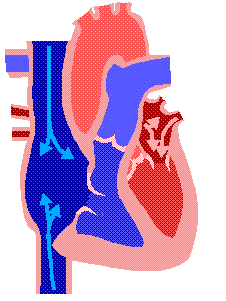
The central nervous system consists of brain and spinal cord.
Human Brain
À Brain is the highest coordinating centre in the body.
À It is present in the bony box in the skull called cranium. It is surrounded by three membranes called meninges.
À The space present between the membranes is filled with a cerebrospinal fluid that protects the brain from mechanical shocks and acts like a cushion.
À The brain is divided into three regions- forebrain, midbrain and hindbrain.
Human Brain It consists of three parts 
Forebrain
1.Cerebrum
2Hypothalamus
2.Midbrain
3.Hindbrain
1.Cerebellum
2.Pons
3. medulla oblongata
2..It is the site of our faculties such as learning, reasoning, intelligence, personality and memory. All our thoughts, sensations, actions and movements are controlled by the cerebrum.
3.The cerebrum has different areas for performing different functions.
1. Sensory area: The information is received from the sense organs like eyes, ears, nose, tongue, and skin and gives sensation of feelings.
2. Motor areas: Instructions are sent to various organs or muscles to do various types of activities.
4. In cerebrum five lobes are present to control specific activities.
1. Occipital lobe…Visual reception
2. Temporal lobe…Auditory reception
3. Parietal lobe……Perception of general sensation like touch, smell, temper ature and conscious association.
ature and conscious association.
4. Frontal lobe……Muscular activities, both voluntary and involuntary. It also includes speech, thought and memory etc.
HYPOTHALAMUS
Controls and regulate body temperature, hunger, thirst, blood pressure etc.
MIDBRAIN
The midbrain controls reflex movement of the head, neck and trunk in response to visual and auditory stimuli.
It also controls eye muscles, change in pupil size and shape of the eye lens.
HINDBRAIN
Cerebellum…..
1. Controls and coordinates precise and accurate movements such as walking in a straight line, riding a bicycle and picking up a pencil, etc.
2. It also helps in maintaining posture and balance of the body.
Pons…..It acts as a bridge carrying all sensory and motor neurons between brain and spinal cord.
Medulla Oblongata…..1. Posterior most part of the brain. Continues into spinal cord.
2.Have reflex centers to control activities like swallowing, coughing, sneezing, vomiting, heart beat, swallowing and breathing etc.











